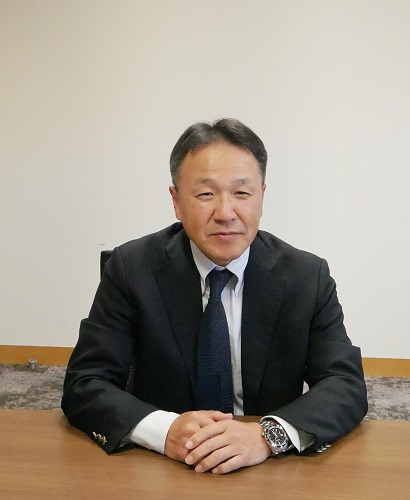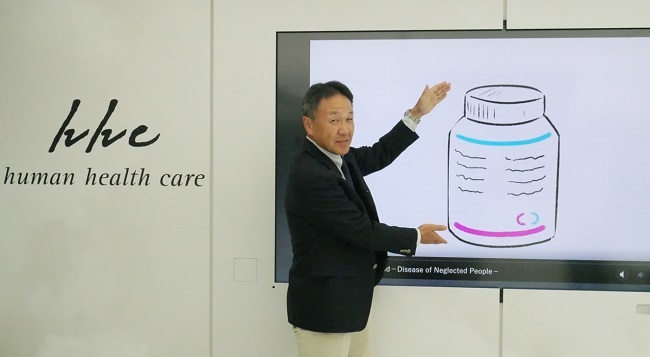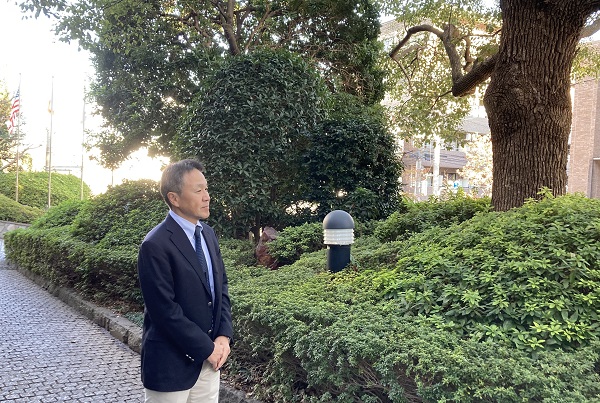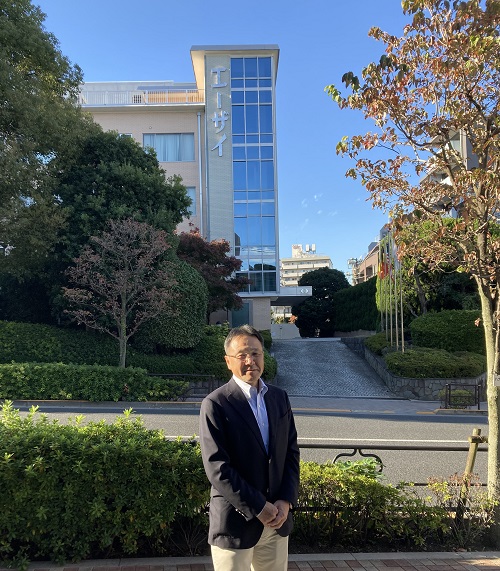March 27, 2024
Under the human healthcare (hhc) concept, Eisai aims to effectively achieve social good in the form of relieving anxiety over health and reducing health disparities. One social good Eisai is focusing on is the elimination of neglected tropical diseases (NTDs), which is a target (3.3) of the United Nations Sustainable Development Goals (SDGs). In 2010, Eisai signed a statement of intent with the World Health Organization (WHO) to supply DEC tablets, a lymphatic filariasis (LF) treatment, for free of charge. As Eisai had no experience in manufacturing DEC tablets at the time, Eisai conducted formulation development, and started free provision of DEC tablets to endemic countries after receiving the WHO’s Prequalification1 in 2013. We interviewed Dr. Takayuki Hida, Senior Director, Sustainability Department, Eisai Co., Ltd, who is in charge of the free provision of DEC tablets.

Tell us about your experience with free provision of DEC tablets.
In November 2013, the following month after the first shipment of DEC tablets for the WHO’s Global Programme to Eliminate Lymphatic Filariasis, I joined the Global Access Strategy Department, which was the main section promoting the project at the time. Prior to this transfer, I was working on research and development projects to utilize disease-related biomarkers for diagnosis or treatments at Tsukuba Research Laboratories. After transferring, I became in charge of production and shipment control of DEC tablets to provide them in a timely manner in line with the WHO’s requests from LF endemic countries. I attended the WHO meetings to learn about situations in endemic countries, and promoted the project closely communicating with our colleagues in India, where the manufacturing plant is located, and staff in Europe, who were responsible for regulatory matters. At that time, the name “Eisai” was hardly known among stakeholders with whom I met at the WHO conferences, and I remember thinking that our contribution was yet to come.
What was the initial progress of the DEC project?
As Eisai had not manufactured DEC tablets in the past, a joint project team was set up in March 2011 with members from our headquarters in Tokyo, the European Regulatory team, and the Vizag plant in India. Although Eisai initially expected that the WHO prequalification would be obtained by proving quality equivalency of our product in comparison with existing products, the WHO requested data from bio-equivalence studies in human subjects since DEC tablets were discovered in the 1940s and have had long history of use since then. This lead Eisai team to suddenly need to plan pharmacokinetics studies. With the efforts of stakeholders, Eisai managed to minimize delay in the schedule, and successfully filed for the WHO approval in October 2012. Thereafter, GMP2 audits were implemented at the Vizag plant in January 2013, leading to the WHO prequalification in August of the same year and the first product shipping in following October. Despite the review process normally taking about 18 months, the medicine was approved in 10 months thanks to Eisai’s teamwork. The WHO praised Eisai’s case, leaving everyone proud of this accomplishment. This regulatory filing made by Eisai led to the addition of NTDs to the disease categories subject to the WHO’s prequalification, pioneering a new path for future development.

How have you built trust in global partnerships?
We collaborate with various global partners as well as the WHO for the LF elimination program. Our partners respect each other regardless of their sectors and I feel that we all work for the same goal. Although medicines are essential for eliminating diseases, it cannot be accomplished without a series of actions, such as delivering medicines to endemic countries, providing information to local residents about the importance of taking drugs through disease awareness activities, and encouraging them to visit the mass drug administrations (MDAs) sites to take medicines. In addition to providing medicines, we also participate in activities and discussions to make the elimination programs successful.
For instance, Eisai supported the development of “the filariasis test strip (FTS)”. Elimination of LF involves evaluating the success of MDAs by checking the infection rate of filariasis. During the development of FTS, a diagnosis kit for detecting filarial worm antigens in human blood, by a company with a subsidy from the Bill & Melinda Gates Foundation, it needed to meet demands for use in endemic countries’ healthcare environment. Healthcare practitioners had pointed out problems, such as the size of the kit being too small and it could be blown away by wind, or handling of QR codes was difficult at clinical sites. That put the people involved in the project in a predicament since re-development of the diagnostic kit would take at least another couple of years. With input from Eisai colleagues who had experience with diagnostics development, the kit was launched as originally planned with additional accessories such as use of supplemental trays and attached name stickers.
Due to Eisai’s corporate concept of hhc, its corporate culture allows its employees to learn the feelings of patients and healthcare professionals, as well as discuss their ideas with anyone or propose solutions beyond organizational sections. Our partners appreciate us for not only provision of DEC tablets but also our flexible attitude to fulfilling requests from clinical sites, which in turn lead to creation of mutual trust over the course of more than ten years.

What is the ultimate objective of this project?
In 2012, 13 pharmaceutical companies including Eisai, the Bill & Melinda Gates Foundation, the WHO, the U.S. Agency for International Development (USAID), the U.K. Department for International Development (DFID), the World Bank, and governments of NTD-endemic countries pledged their support to the London Declaration, a coordinated effort to eliminate NTDs and the largest international public-private partnership in the field of global health to date, seeking the elimination of 10 NTDs. Since the London Declaration, the pharma industry has donated 19 billion high-quality treatments until 2022. During this period, tremendous achievements have been made through NTDs elimination activities of the public-private partnership. 49 countries have eliminated at least one NTD and 600 million people no longer require interventions against NTDs. I believe this great achievement was made through global partnerships beyond sectors.
In 2021, the WHO launched its new NTDs road map for 2021-2030. As the progress of the program has been delayed with the outbreak of the Covid-19 pandemic, along with partnerships, country ownership for counter measures became important. It is estimated that globally about 800 million people are still in need of MDAs for LF elimination. Eisai is committed to providing DEC tablets for free to endemic countries in need until LF is eliminated in these countries. In addition to DEC provision, we seek to work on comprehensive approaches, such as supporting MDAs, disease awareness activities and sanitation improvement.

- 1 An approval granted by the WHO through assessment of the quality, safety and efficacy of medicinal products which will be distributed in resource-limited countries.
2 GMP (Good Manufacturing Practice) standards required for appropriate control over manufacturing processes of medicine to ensure manufacturing consistency of high-quality pharmaceuticals.
